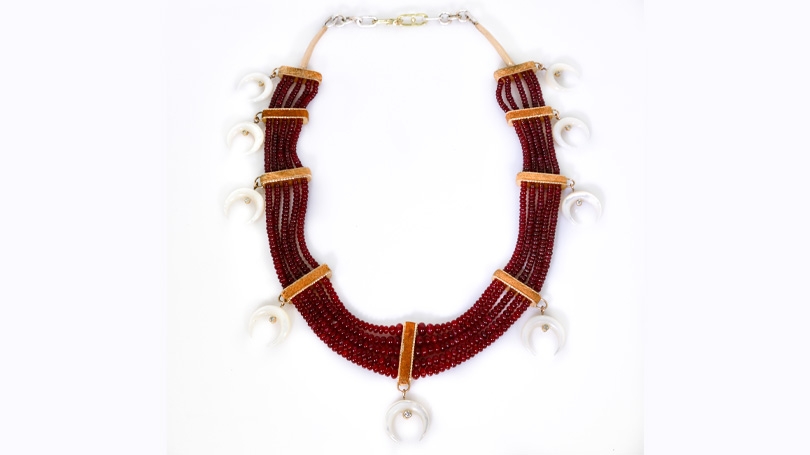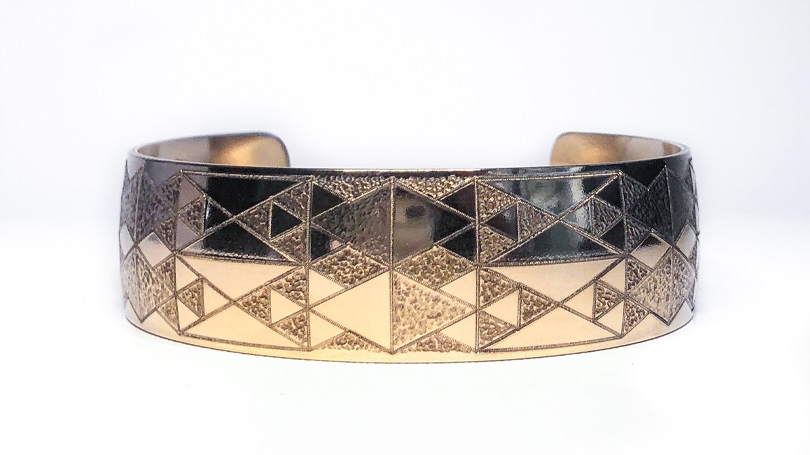Indigenous Jewelry Today
When tanning hides—creating leather from animal skins—Indigenous people traditionally use the brain of the animal, which acts as a natural preservative. And if the leather is to be soft and supple, even when it gets wet, it's best to smoke the leather during the brain tanning process. When fine jeweler, Keri Ataumbi, shared her contemporary Kiowa ruby necklace with the Indigineous Jewelry Today panel discussion in May 2021, she also shared how the brain tanned smoked buckskin in the piece is just as precious as the rubies and gold. The juxtaposition between what is or isn't considered valuable reverberates in this expertly crafted piece, and it is a concept that Keri continually emphasizes in her work.
At the event, Indigenous Jewelry Today: Four Perspectives from Hawaii to New York, Sháńdíín Brown '20, was a critical moderator and kept the conversation relevant and fresh. Keri, along with artist panelists Nanibaa Beck, Margaret Jacobs and Tara Keanuenue Gumapac discussed many aspects of the making process, but continually revisited the concept of material and immaterial "value" in their work. Margaret, like Keri, said she is interested in this duality of value through the use of steel, powder-coating, bone, silver and semi-precious stones. It is a balancing of materials that are valuable in the Native and non-Native worlds. Nanibaa and Tara also discussed the layers of intentionality in their work: that not only is there value in the physical materials, but also in the thoughts and feelings they channel into each piece.
As a young Indigenous jewelry maker, it's inspiring to listen to four incredible women talk about the intentionality behind their work, and assign that intention value. With my own beadwork, I feel most people can recognize the time and effort I put into creating pieces, but it's difficult to convey the layers of meaning and value of the glass seed beads themselves. To explain, in my Ojibwe language, the word we use for "bead" translates to "little spirit." The intentions each artist spoke about infusing into their work also truly resonated with me. When I learned how to bead, for example, I was taught by an older Ojibwe girl that when I bead, I should keep in my mind and heart the person for whom I'm beading. These positive intentions from the maker add a rich layer of value that all four artists are working to share and have more broadly recognized.
This event celebrated Indigenous jewelry makers and the stories we tell through our work. It's validating to me as a young artist to hear these accomplished women emphasize the value of our intentions and traditional materials. I will continue to draw inspiration from being a part of this incredible conversation.
Many thanks to the Hopkins Center for the Arts, Donald Claflin Jewelry Studio, Hood Museum of Art, Native Americans at Dartmouth (NAAD), Native American Program (NAP), Hokupa'a, Native American Studies for co-sponsoring the Indigenous Jewelry Today panel, May 2021.
The full recorded program can be found on the Hopkins Center for the Arts' Youtube page here.



